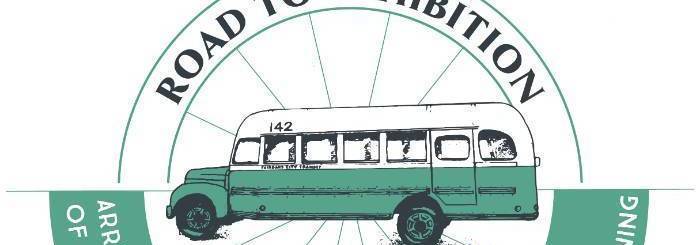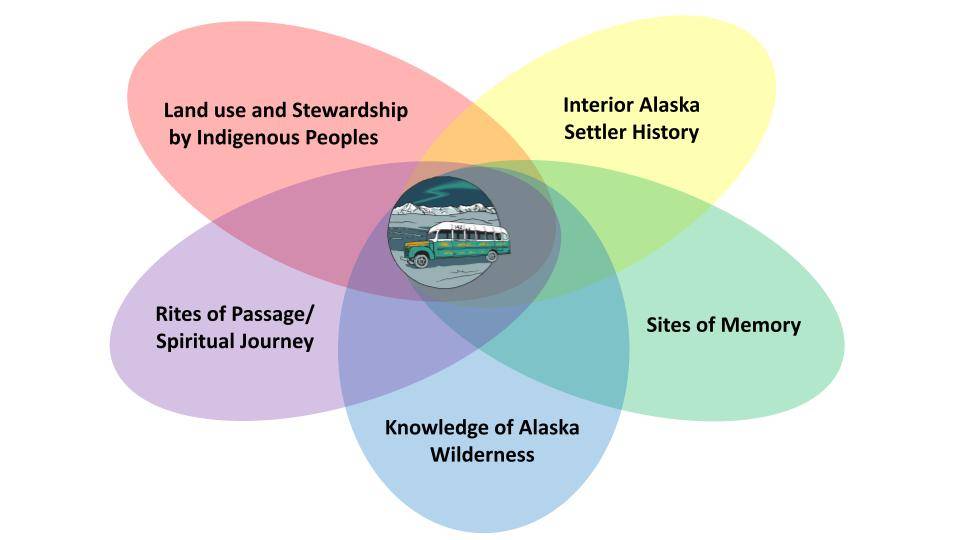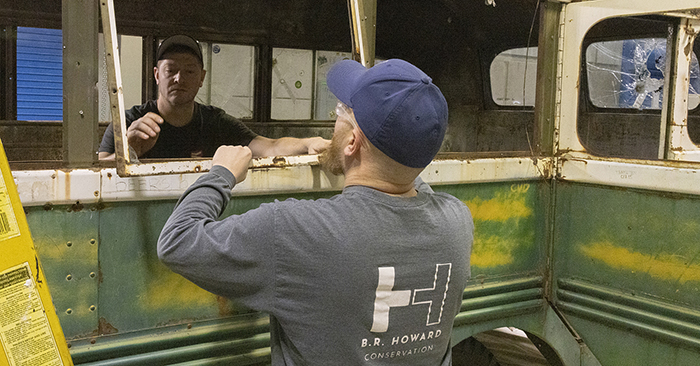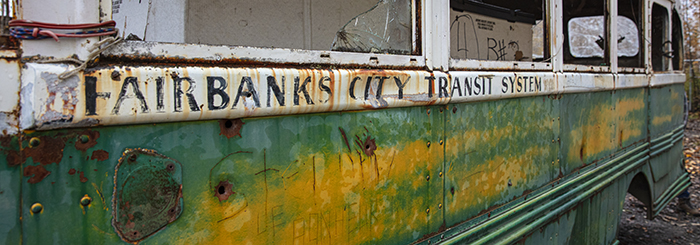Bus 142
Be a part of the Road to Exhibition!
The UA Museum of the North is proud to be an official state repository for the State of Alaska. It is through this relationship that we are able to be the caretaker of Bus 142. Learn more about what it takes to care for an historical item like the bus and how we develop a collaborative exhibition for visitors to Fairbanks and beyond.
NEW: Hear about the Bus in the Museum's podcast, The More You Look
Connect directly to the episodes here:
View our Bus 142 Virtual Exhibit
Share your story about the bus here
View the Bus 142 Graffiti Data Crowdsourcing album at Google Photos

You may be wondering, "When and where can I see the bus?"
Learn more about where we are in the multi-year process here.
-------------------
With the conservation process completed, the bus will be off public view from October 2023 until we are able to raise the necessary funds to create the public
exhibition on the UAF campus, behind the museum. Keep an eye on our social media accounts
for periodic updates.
Thanks to a two-year partnership with UAF's Institute of Northern Engineering (INE) and the Arctic Infrastructure Development Center (AIDC), the public was able to view the bus at the ConocoPhillips Alaska High Bay Structural Testing Lab at the Joseph E. Usibelli Engineering
Learning and Innovation Building (JUB) on the UAF campus, between October 2021 and
October 2023.
Through a collaborative process using a number of community advisory groups, the museum
will undergo a multi-year project to conserve the aging bus that has been subject to years of vandalism.
Teams will also develop an interpretive approach that will focus on the various life-stages of the bus. From its service in the 1940s and1950s as a military transport vehicle and then as a part of the Fairbanks City Transit System, as a home for the family of a Yutan Construction Company mining road crew member in the early 1960s, as a shelter for hunters and back-country hikers in the 1970s and '80s, and most famously as the final place of refuge in 1992 for Christopher McCandless, the young man whose story was made famous by the 1996 Jon Krakauer book, Into the Wild.
The bus will be exhibited in an outdoor space near the Museum, on the UAF campus. Visitors will have the opportunity to experience the history safely, for the first time in thirty years.


Check out the complicated process of balancing the preservation of existing elements while repairing and restoring lost components. In addition to the safety of our visitors, the long-term care of the bus and associated collections is our number one priority.



In September 2020, the UA Museum of the North became the official repository for Bus 142 (aka "Stampede Trail Bus", "Magic Bus", or "Into the Wild Bus"). The bus and associated historical materials will be cataloged into the Ethnology & History permanent collection and eventually placed on public exhibit.
Removed by the Alaska Army National Guard from its nearly 60-year home along the Stampede Trail, the 1946 International Harvester K5 bus will soon find its new home on the grounds of the University of Alaska Fairbanks (UAF).
In order to do all of this, the UA Museum of the North needs your help!
Hit the Donate Now button to be part of the efforts to preserve this important piece of Alaska's history.
